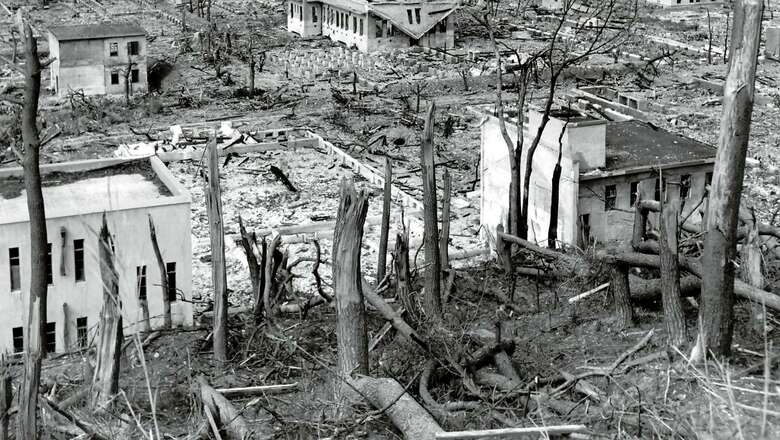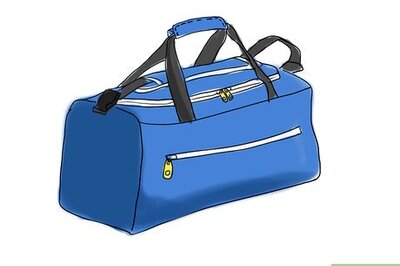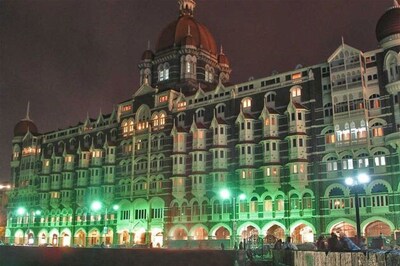
views
There was no mistaking the beginning of the nuclear age. The August 9, 1945, bombing in the Japanese city of Nagasaki came three days after the United States dropped its first atomic bomb on Hiroshima, the world’s first ever nuclear attack that killed 140,000. On August 15, Japan surrendered, ending World War II. Many survivors developed cancer or other illnesses due to their exposure to radiation and suffered discrimination. New scientific horizons were emerging, as were new and grave moral quandaries. TIME reported in the week following the explosions that the men on the Enola Gay could only utter two words: “My God!”
Here are eyewitness accounts of the Hiroshima and Nagasaki bombs, gathered to commemorate the 76th anniversary of the strikes
1) Before the bombing of Hiroshima, Sachiko Matsuo’s father came upon a leaflet dropped by American planes to warn the city’s population of an impending assault. He went to work, but his surviving family members changed their minds and opted to stay in the barracks for another day. Only hours later did the device detonate. All of those who were hiding in the cabin escaped the initial impact, albeit with serious burns and lacerations.
Matsuo’s father, who had been stationed with his civil defence unit outside an armaments plant, returned to the hut that afternoon. He’d suffered many injuries, including cuts to his head, wrists, and legs, and had to walk with a cane. His eldest son, who had also been deployed with a civil defence team, was killed in the explosion. The family subsequently discovered his body on a rooftop, but by the time they went to recover it, the body had vanished. Matsuo’s father began to suffer from radiation consequences in the weeks following the explosion.
2) Yoshiro Yamawaki, 11, went out in search of his father the day after the United States detonated an atomic bomb on Nagasaki, only to find their father’s half-cremated body abandoned and blanketed in ash, who had failed to return from a shift at the local power plant.
On the way to the factory, Yamawaki and two of his brothers witnessed unspeakable horrors, such as corpses whose “skin would come peeling off just like that of an over-ripe peach, exposing the white fat beneath”; a young woman whose intestines were dragged behind her in what the trio initially mistook for a long white cloth belt; and a 6- or 7-year-old boy whose parasitic roundworms had come “shooting out”.
3) Hiroyasu Tagawa, 12, and his sister moved in with their aunt, who resided a short distance away from Nagasaki, in the spring of 1945, while his parents relocated to a neighbourhood near to their employment in the city centre. All of them who lived at the aunt’s house escaped the bomb with minor injuries. Tagawa then decided to head to the city centre to look for his parents. There, he discovered mounds of bodies and people seeking missing family members. Fortunately, he discovered them, but his father died three days later.
More sorrow was to follow: not long after Tagawa went to his aunt’s village to give the news of his father’s death, he learned that his mother, who was suffering from radiation poisoning, was now in serious condition. He arrived barely in time to say farewell as he cycled back to her bedside.
4) To date, only one survivor of both the Hiroshima and Nagasaki bombs has been acknowledged by the Japanese government: naval engineer Tsutomu Yamaguchi, who died in 2010 at the age of 93. He’d been a Nagasaki resident for a long time, but he’d spent the summer of 1945 on temporary duty in Hiroshima. His last day of work before heading home to his wife and baby son was scheduled for August 6. The 29-year-old was heading to the shipyard that morning when he was knocked out by a “huge light in the sky.”
Yamaguchi’s eardrums were punctured, and his face and forearms were burnt. He managed to gather his stuff and leave towards Nagasaki. When Yamaguchi arrived, he went to a hospital to be treated for his burns. He reported for duty the next day, believing himself fit for duty, and was in the process of narrating the bombing when another blinding flash of light filled the room. Yamaguchi escaped with minor injuries. But, over the next few days, he began to feel the symptoms of radiation poisoning.
Read all the Latest News, Breaking News and Coronavirus News here.
















Comments
0 comment